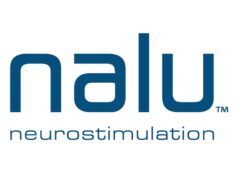
Intermittent dorsal root ganglion stimulation (DRG-S) has been shown to produce comparable results to continuous stimulation across a two-week period, as reported in Neuromodulation: Technology at the Neural Interface by investigators Kenneth Chapman (The Spine and Pain Institute of New York, New York City, USA) and colleagues.
Outlining the results of a single-centre randomised controlled feasibility trial, Chapman et al note that this intermittent delivery approach may extend battery life and facilitate smaller implantable pulse generators moving forward, adding: “The significant improvements in pain, function, and quality of life, utilising very low-frequency stimulation and intermittent dosing with DRG-S have the potential to set a new bar for the meaning of true low-energy neuromodulation.”
The authors initially aver that a spinal cord stimulation (SCS) method with paraesthesia-free waveform used in the dorsal columns, known as burst SCS, has previously demonstrated efficacy in chronic pain treatment through intermittent stimulation—whereby stimulation is cycled on and off for set durations of time. Conventional SCS uses a tonic waveform, they continue, and is a paraesthesia-based therapy that is ineffective at sub-perception levels, as well as when delivered in a cycled manner. On the other hand, DRG-S also uses a tonic waveform, and is most commonly applied at sub-perception levels.
As such, they embarked on a study, following a prospective, randomised, balanced, double-blinded assessor protocol, with the aim of determining whether the cycling of DRG-S could maintain the approach’s therapeutic efficacy. Chapman et al detail that 20 DRG-S responders (mean age=61 years, nine men) were randomised to a sequence of three programmes for consecutive two-week intervals: continuous stimulation; one minute on/one minute off; or one minute on/two minutes off. The primary outcome of this study was a change in pain ratings with the cycled programmes as compared to continuous stimulation, while secondary outcomes included changes in function and quality-of-life scores, as well as stimulation programme preferences.
Between the three groups, mean scores were similar at the end of each two-week stimulation programme—as per the Numerical Rating Scale for pain (p=0.39), disability (p=0.72) and general health (p=0.95). No clinically significant differences were found from the upper boundaries of the 95% confidence intervals of the mean difference in pain, disability and general health/functional outcomes for either intermittent stimulation programme versus the continuous programme. According to the researchers, it is also “noteworthy” that outcome measures at the end of each two-week stimulation programme were similar to pre-study DRG-S outcome measures across all three programmes.
And, Chapman et al add, at the end of the study, the continuous stimulation, 1:1 on-off dosing and 1:2 on-off dosing programmes were preferred by a similar number of patients, supporting the notion that there was little perceived difference between continuous and intermittent stimulation dosing.
In addition to demonstrating that delivering DRG-S in an intermittent cycled pattern maintains similar effects on pain relief, disability and functional improvement versus standard, continuous stimulation, the researchers note that this efficacy being sustained at a total charge per second of 0.3μC/s through intermittent dosing “further underscores the potential mechanistic differences between DRG-S and SCS, and highlights the role of DRG-S in the dorsal horn”. Chapman et al go on to state that the typical six-year lifespan of many current DRG-S implantable pulse generators can likely be “extended significantly”—potentially up to 10 years or more—with cycled stimulation.
However, the authors also acknowledge the small number of patients in their feasibility study, and other factors limiting its generalisability across chronic pain patient populations, positing that further research is necessary to address these issues—and to elucidate the maximal stimulation-off durations that can be applied while maintaining efficacy, as well as the long-term sustainability of intermittent stimulation dosing.













